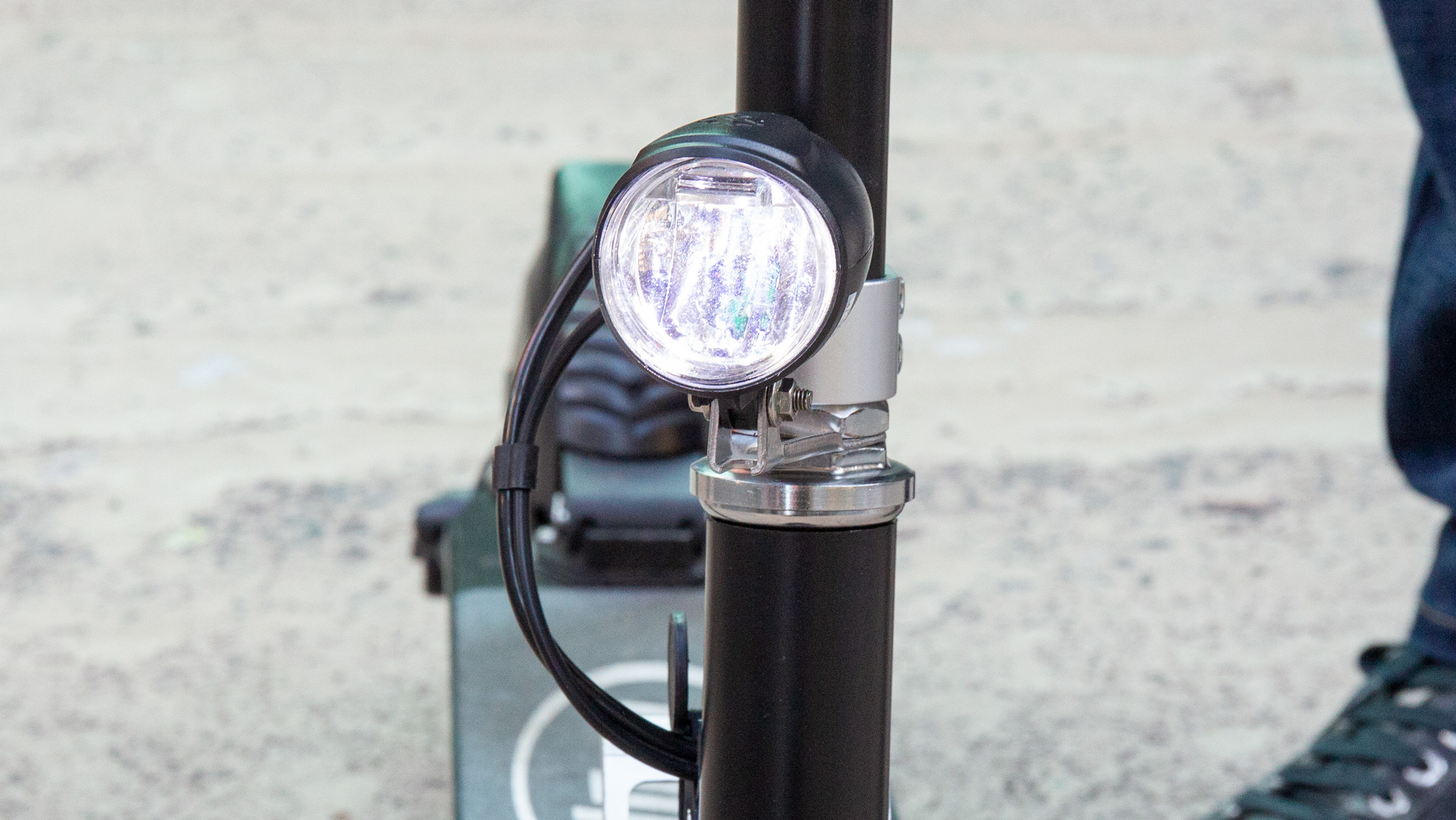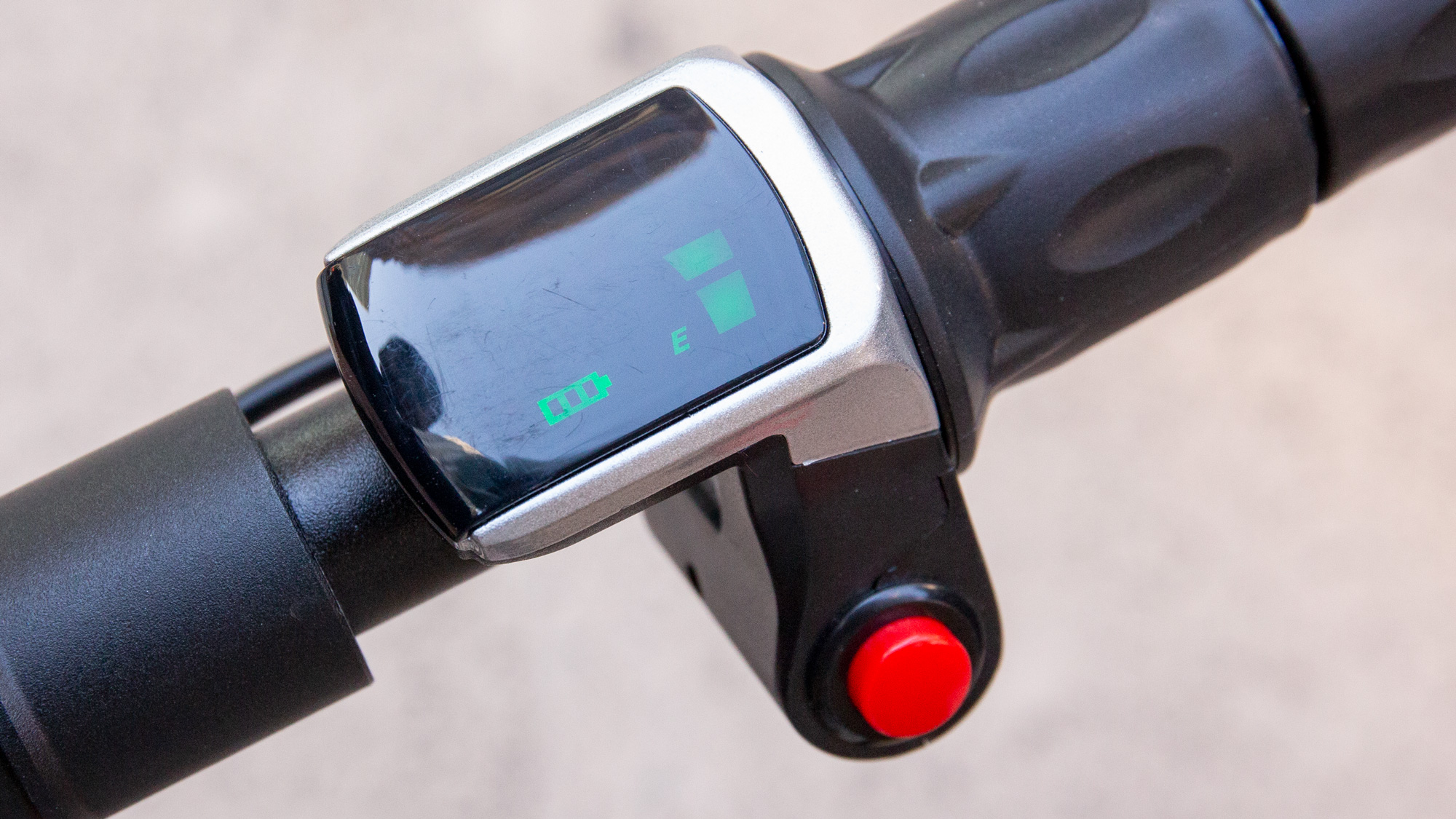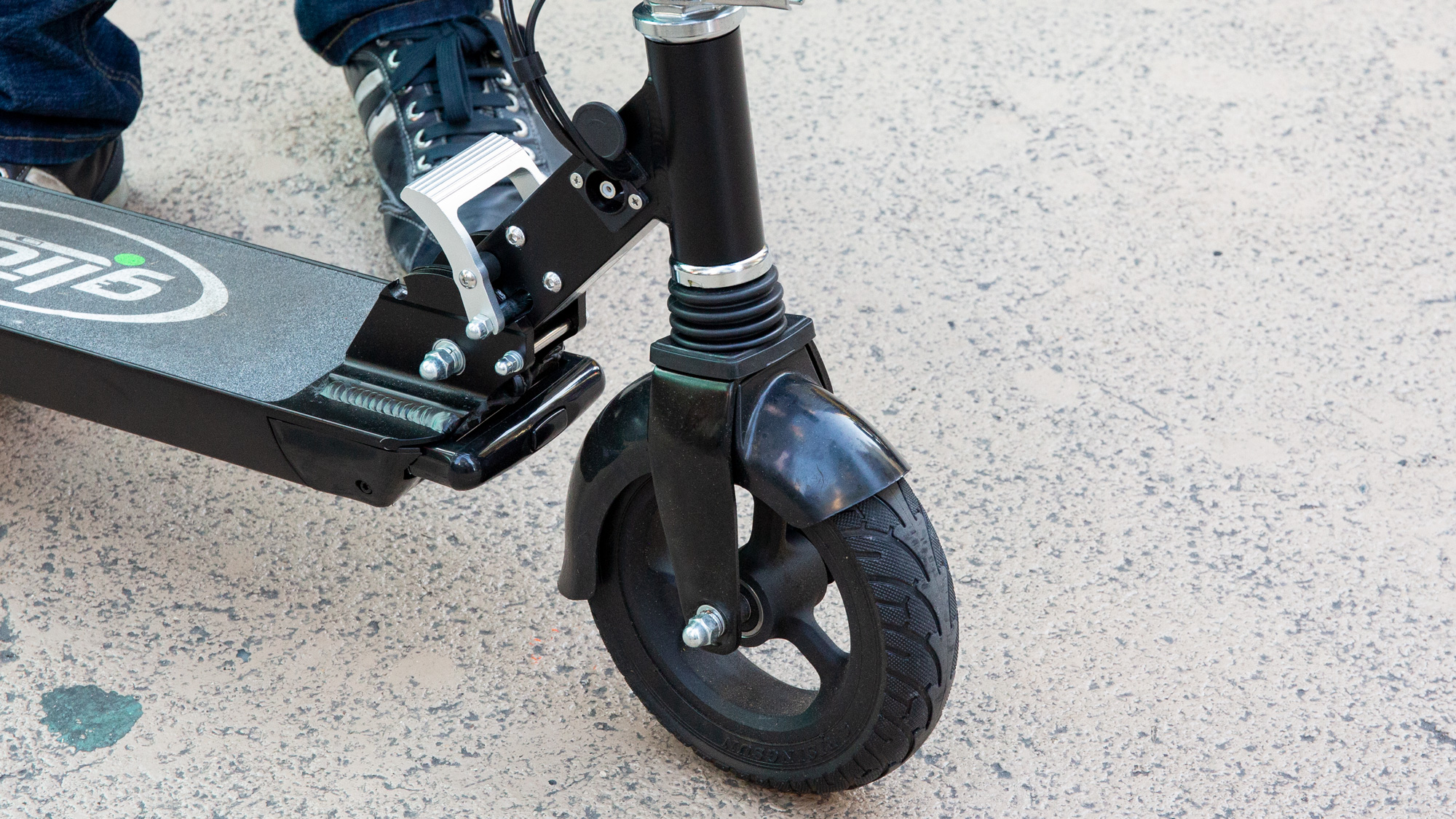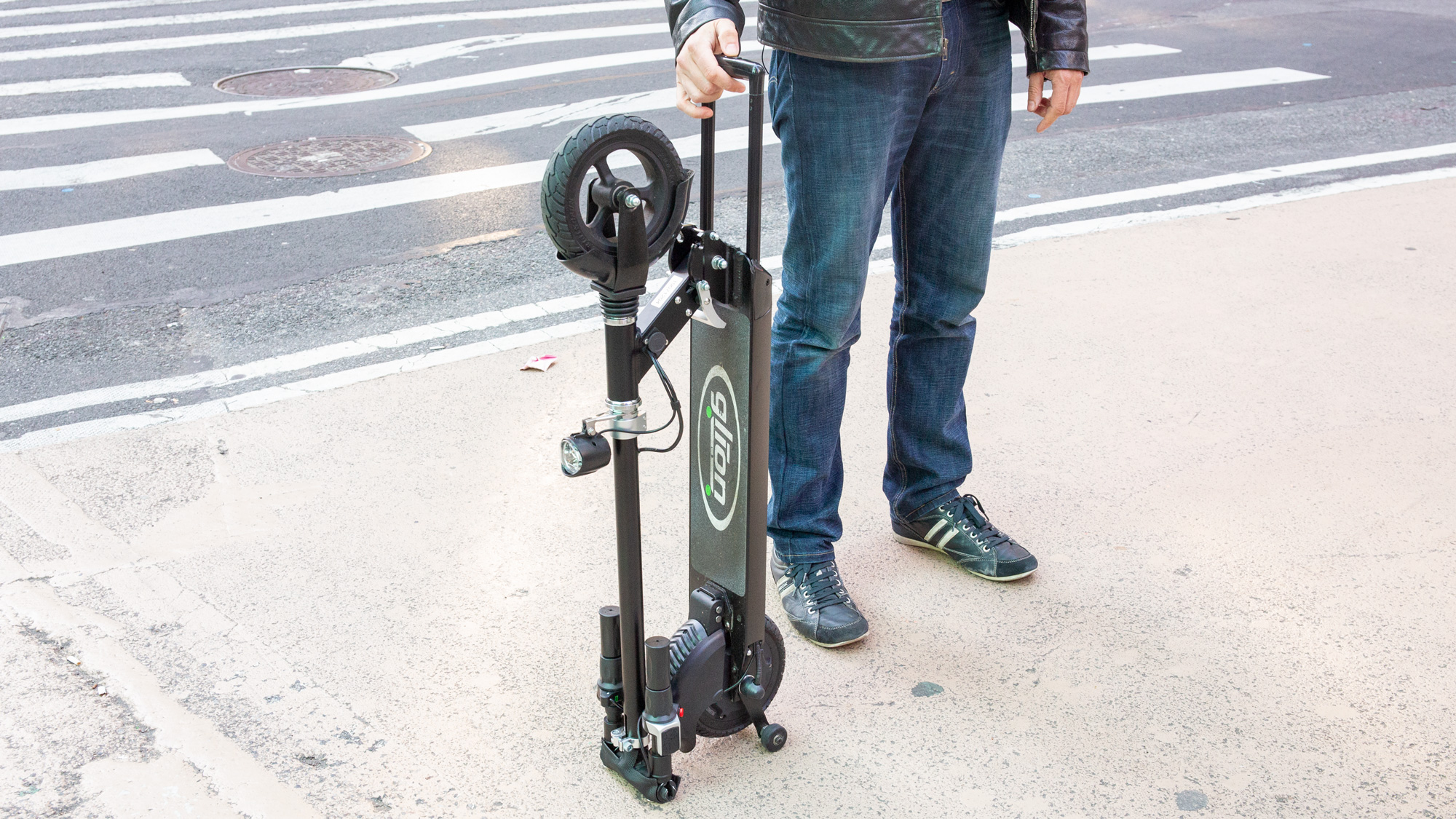Tom's Guide Verdict
The Glion Dolly electric scooter is sturdy, has a good range and speed, and folds up quickly and easily.
Pros
- +
Sturdy, adjustable design
- +
Folds up fast
- +
Convenient carry handle
Cons
- -
Basic display hard to see in sunlight
- -
Brake a bit aggressive
Why you can trust Tom's Guide
My daily commute consists of a 1-mile walk to the train station, a 40-minute ride (if New Jersey Transit is cooperating), followed by another 1-mile walk to my office in Manhattan. It's not the most arduous commute, but it is nice to be able to speed it up. The Glion Dolly electric scooter ($500) is tailor-made for commuters like me. It's sturdy, folds up neatly and gets me where I need to go. That's why this rideable earns a spot on our best electric scooters list.
| Size (unfolded) | 45 x 38 x 16 inches |
| Weight | 28 pounds |
| Max rider weight | 255 pounds |
| Max speed | 15 mph |
| Max range | 15 miles |
| Motor | 250-watt, rear-wheel drive |
| Battery | 36 V, 7.8 Ah lithium-ion |
| Charging time | 3.5 hours |
Glion Dolly design
This is a solidly built scooter. The Glion Dolly's aluminum frame looks and feels like it can take a lot of abuse; it easily withstood a week of me driving it through Midtown Manhattan. Its handlebars can be adjusted to one of three heights, and the deck of the scooter is covered in the same sort of grippy surface you'll find on a skateboard. My feet remained firmly planted on it, no matter what.

Right above the front wheel is a headlight, and the rear fender has a red taillight, both of which are must-haves, especially if you're riding at dusk or in the morning. The headlight, which can be tilted vertically, is extremely bright and focused. When I placed the Glion next to the Swagtron Swagger 5, I found the former's light to be much more intense, almost like staring at the high beam of an oncoming car. Similarly, the Glion's taillight is much larger and brighter, though I liked that the Swagger 5's light flashed.
I also liked that there are very few protruding wires on the Glion Dolly, one less thing to worry about.
Glion Dolly controls and display
The controls are pretty simple on the Glion Dolly: A red button on the right handlebar turns on the scooter and activates its lights. There's a spring-loaded twist throttle on the right, and a similar mechanism on the left handlebar to activate the brakes.

Also on the right-side handlebar is a small green display that shows the battery life and expected range, the latter marked by four green bars. The number of bars changes depending on the battery level and how hard the Dolly is working; go uphill, and only a single bar may appear.
This screen is a bit too basic for a $500 scooter — how far is one bar supposed to get you? — and hard to view in sunlight. The $349 Swagtron Swagger 5, by comparison, connects to your smartphone via Bluetooth and shows your speed and can track your travels.
Glion Dolly performance
The Glion Dolly adeptly handled both city and suburban streets. Both of its wheels are rubber, which made for a fairly smooth ride, but you'll still feel every bump in the road. The small shock absorber for the front tire doesn't do much of anything. I found the inflatable front tire of the Swagton Swagger 5 took potholes and sidewalks a bit more easily.

Capable of reaching speeds up to 15 mph, the Dolly and its 250-watt motor in the rear wheel aren't going to win any races, but it got me back and forth to work quickly. Going up a hill with a 6 percent grade, the Dolly slowed to a crawl of about 5-6 mph, but made it to the top. On the same hill, the Swagger 5 slowed even more, to the point where I had to get off and walk.
The Dolly has two braking systems: The first is a twist-grip on the left handle, which alters the voltage flowing to the motor and creates a magnet to slow the scooter down. It's very aggressive, especially at higher speeds; it came on so strong that I felt as if I was going to fly over the Dolly's handlebars. I quickly learned to be very gentle with it. Although not as sleek, the Swagtron's Swagger 5 more traditional handbrake made it easier to apply pressure more gradually.
The second braking system is a flexible rear bumper, which you step on to apply pressure to the rear wheel. Basic, but it works.
Glion Dolly battery life and range
Glion says the Dolly has a 15-mile range, but that assumes a 160-pound rider, in 75-degree temperature, on a paved road that's hard and flat, with no wind and at a steady 9 mph.
I took it on a 6-mile ride that included a few hills, including a quarter-mile with a 6% grade. The ride took about 30 minutes (I was averaging about 12 mph), after which the Dolly had two bars of battery remaining, which I estimated would be good for at least another mile. By contrast, the Swagger 5's battery died shortly after the same trip. If you need something with a much longer range, check out our Segway Ninebot Kickscooter Max review.
Glion Dolly folding up for travel
The Dolly is made for commuters. Glion put a lot of thought into how you'll use the Dolly when you're not riding it. In as little as 10 seconds, I was able to fold the scooter and carry it onto a train.

Not only does the Dolly's stem fold down, but the handlebars fold inward, making it less likely you'll snag them on something. I especially liked the pull-out handle and two small wheels, which let me roll the scooter around like a piece of luggage. They're best on smooth surfaces, and any sudden turns will cause the whole thing to tip over, but it made it much easier to pull the 28-pound scooter through a train station.
MORE: Best Electric Scooters
I also liked that the front wheel had spokes, which allowed me to lock the scooter to a bike stand when I had to run into a store for groceries.
Bottom line
The Glion Dolly strikes a near perfect balance of price and performance, especially for commuters. At $500, it's not the least nor the most expensive electric scooter, yet is fast enough to dodge slow-moving traffic, and folds up quickly and easily for when you need to carry it around. If you have a longer commuting distance, you'll want to upgrade to something like the Segway Ninebot ES4 ($769), which has nearly twice the range. But for $500, you won't find a better combination of price and performance.

Michael A. Prospero is the U.S. Editor-in-Chief for Tom’s Guide. He oversees all evergreen content and oversees the Homes, Smart Home, and Fitness/Wearables categories for the site. In his spare time, he also tests out the latest drones, electric scooters, and smart home gadgets, such as video doorbells. Before his tenure at Tom's Guide, he was the Reviews Editor for Laptop Magazine, a reporter at Fast Company, the Times of Trenton, and, many eons back, an intern at George magazine. He received his undergraduate degree from Boston College, where he worked on the campus newspaper The Heights, and then attended the Columbia University school of Journalism. When he’s not testing out the latest running watch, electric scooter, or skiing or training for a marathon, he’s probably using the latest sous vide machine, smoker, or pizza oven, to the delight — or chagrin — of his family.

